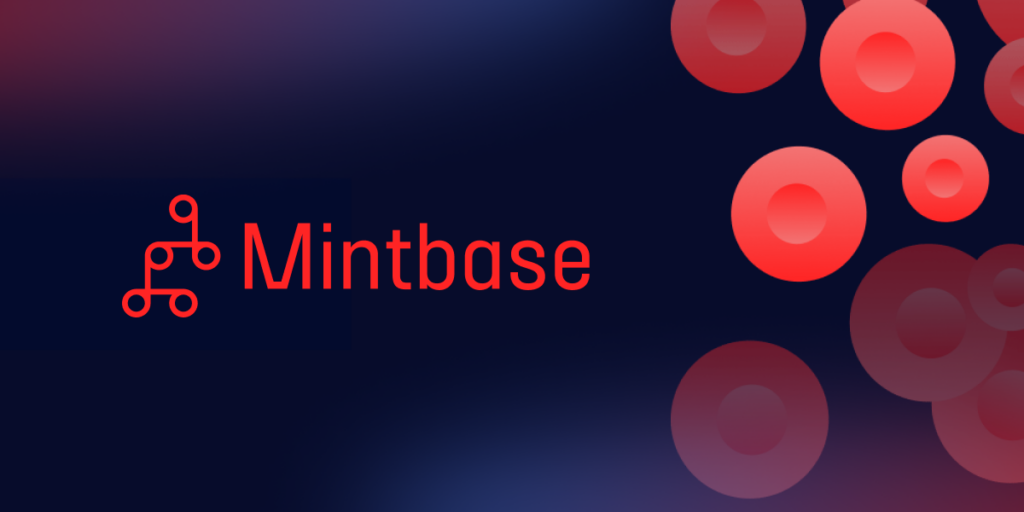Mintbase

How Mintbase Made Minting NFTs Cheaper, Faster, Scalable, and Secure With NEAR
Non-fungible tokens (NFTs) are a major innovation. By providing verifiable digital ownership, the possibilities created by NFTs are endless. NFTs have the merits of being scarce, interoperable, cryptographically-secure, and thereby help asset-owners to earn (by renting, licensing, or earning royalties). The biggest barrier to utilizing NFTs has been that they have been challenging to create and require significant technical expertise…that is, until Mintbase came along.
Mintbase is a global platform that allows anyone to create NFTs without worrying about technical complexities. Artists can create NFTs to sell digital art, musicians can use them for music, and event organizers can use them to sell tickets for their next event. Think of Mintbase as the “Shopify for NFTs”. People are creating and selling music, art, memberships, photography and much more. In a nutshell, anything other than money can be tokenized.

Ethereum Became Too Expensive
The first step to minting NFTs on Mintbase is creating a digital store to sell NFTs. This requires the Mintbase user to create a smart contract and pay a gas fee to Ethereum. Users only need to create a store once, unless creating multiple stores, and this tends to most costly part of the process. Initially, the fee was manageable, costing users around $2 in gas fees to deploy a store. That cost started to rise rapidly as Ethereum’s network became increasingly clogged and gas fees rose.
Creating a store quickly rose to cost hundreds of dollars in gas fees. The situation got to the point where Mintbase actively told its users to hold off from creating a store until gas fees fell. It became an untenable situation for a platform aiming to make it easy and affordable to create, buy, and sell NFTs.
“On average, users created 5 independent, new stores on Mintbase every day. When gas fees on Ethereum skyrocketed, that dropped to 5 stores a week.”
Carolin Wend, Co-Founder Mintbase

To further complicate matters, Ethereum also limited Mintbase in how many tickets a user could mint in a single transaction. Mintbase did some of the ticketing for NFT.NYC, Unitize, and Dappcon, but the event organizers could only mint a maximum of 25 tickets per transaction and had to manually create more.
For every 25 extra tickets the organizers wanted to mint, they needed to pay an additional transaction fee. Not only could this become prohibitively expensive for the event organizers, but it meant Mintbase held back from contacting more conventional businesses that would need to mint thousands of assets on Mintbase. If Mintbase was going to broaden its reach, the team needed to find a platform that could help achieve its mission of making NFTs accessible.
NEAR to the Rescue
The Mintbase team found a better blockchain platform in NEAR. Most importantly for Mintbase, NEAR gas fees are significantly lower than Ethereum’s. This is because NEAR has a more efficient contract execution model that requires less computation and because it uses a dynamic sharding approach called Nightshade. As a result, deploying a store and minting NFTs on Mintbase will become significantly cheaper.
“The NEAR team has given us a lot of support. For example, we have a guild on Telegram called Createbase and NEAR has been really helpful in setting up the guild and supporting us with it.”
Carolin Wend, Co-Founder Mintbase
But there were many other reasons why Mintbase switched to NEAR:
- NEAR uses Rust or AssemblyScript for its smart contracts, making it easier for developers to write secure code.
- NEAR has human-readable addresses for both accounts and contracts. There’s no need for an ENS workaround.
- NEAR Drops allows developers to easily onboard users by paying for their NEAR account and sending them NEAR tokens.
- The ETH <> NEAR Rainbow Bridge allows developers and users to move assets and data between both blockchains without added complexity.
- Big DeFi players such as Balancer and Aave are building on NEAR, which will make it easier for Mintbase to integrate with them further down the line.
“Writing smart contracts on Rust is awesome. It allows you to code error-free and fault-free. It’s a big reason why we chose NEAR. Other blockchains require you to learn less popular programming languages.”
Carolin Wend, Co-Founder Mintbase
More than 13,000 people have already signed up for Mintbase, hundreds of stores have been created, and artists are increasingly innovative in how they are using NFTs. NEAR is the solid foundation that Mintbase needed to work towards its vision of an interoperable world where anyone can create digital assets and transact with them.
About NEAR
The NEAR Protocol makes building and deploying DApps and protocols easier, faster, and cheaper than any other blockchain.
Native usability is NEAR’s primary concern. Features such as its contract-based account model and NEAR Drops make NEAR significantly more usable for developers and end users. Additionally, NEAR has focused on bringing performance for applications. The dynamic sharding approach called Nightshade works on top of a proof-of-stake BFT consensus mechanism called Doomslug. This allows network throughput to scale as demand grows. It targets 1-second blocks so developers can build performant applications.